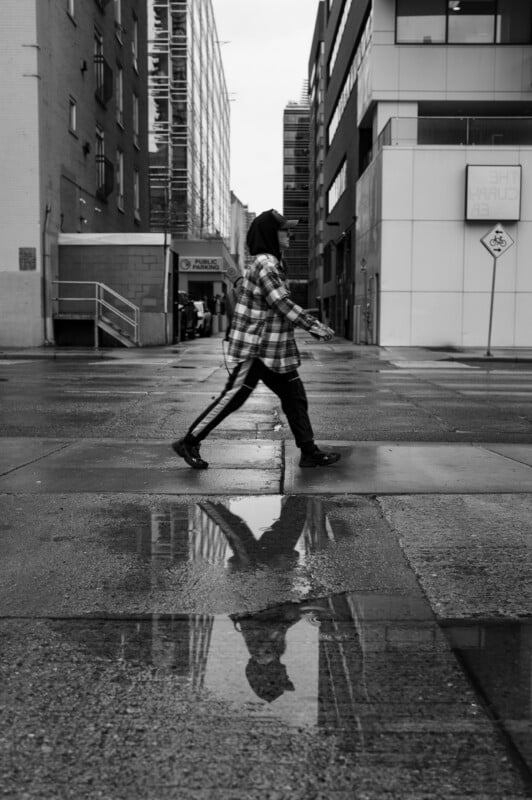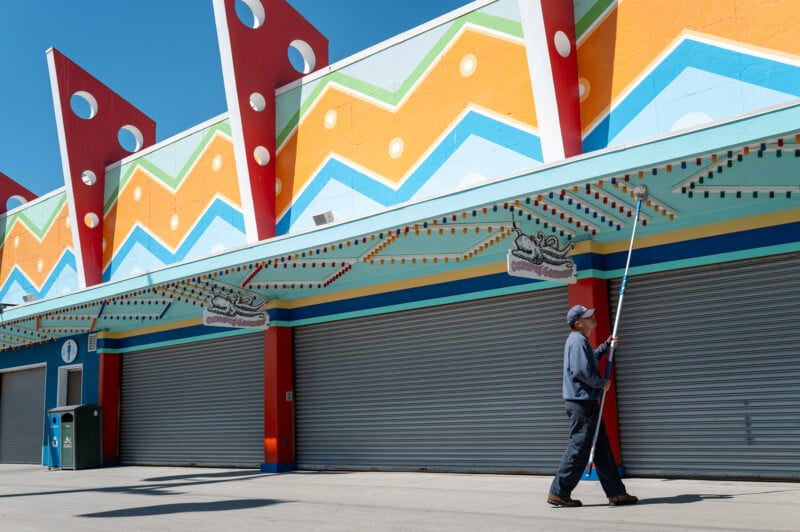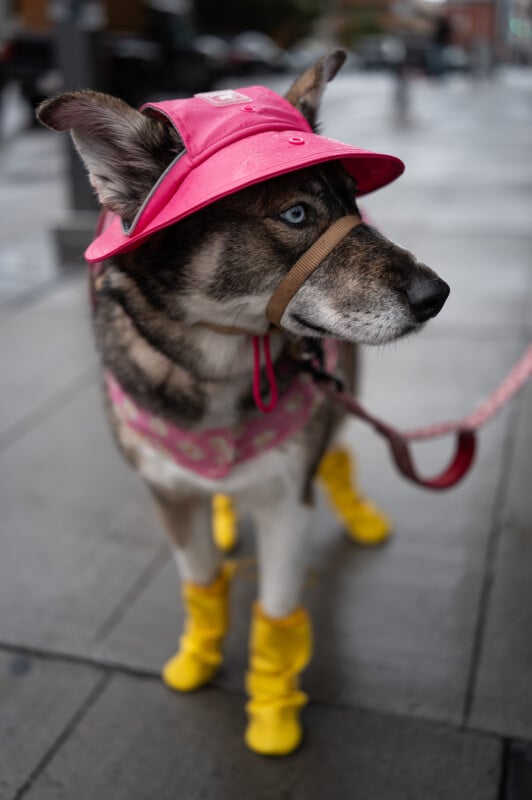Leica Q3 43 Review: It’s All About The New Lens
Photographers love fixed-focal-length cameras since a single lens forces you to think carefully about the composition and move within the scene to capture the shot. There is a simplicity and a meditative experience to be had, wandering the streets with a compact camera on your shoulder. Make no mistake though, the Leica Q3 43 is a pricey piece of bling at $6,895.
Fujifilm users love their X100-series cameras, Ricoh users adore their GRIIIs, and Leica owners covet their Q-series cameras. In most situations, a wider angle lens makes the most sense, not only because more of the story can be captured, but also because higher megapixel sensors allow for a generous amount of cropping. But this time around Leica is changing what is in front of the camera instead of what is inside and moving away from wide and into normal.

Leica has taken a page from Ricoh’s book and made a version of the much-loved Q3 with a newly developed, longer focal length 43mm f/2 APO-Summicron lens, and it brings me right back to a nostalgic place and time when I would wander the streets with nothing but a fixed 50mm. According to Leica, nothing has changed on the body of this new Q3 at all, save for a stylish grey leather finish. I can’t find anything different in the experience of using the Q3 43 body that would disagree with that, and even the lens has a very familiar feel and design structure to the original 28mm f/1.7. I want to focus on the new lens but let’s do a quick recap of the Q3 body design first.

Leica Q3 43 Review: Same Classic Body Design
The Leica Q3 is an enjoyable camera to operate because it is both simple and customizable. Access to any exposure controls and menu options can be done with the touch screen, the control pad, or both. Customizing a button is as easy as doing a long press and choosing a new option. There are enough command dials to have full control and the lens itself has a smooth manual focus ring with a classic distance scale. I love the aperture ring implementation and depth-of-field scale right on the lens, too.

I also recommend dedicating a button for digitally cropping the image with framing guides to mimic a 60mm, 70mm, 90mm, 120mm, and 150mm field of view. Starting with 60 megapixels gives you plenty of detail to crop into with these modes but the pixels do drop off quickly. At a 60mm field-of-view, you still get 31 megapixels and at 75mm you retain 20 megapixels, but go to 120mm for example and you only have 8 megapixels to play with.

The back panel is the same 1.84-million dot LCD panel which tilts on one axis to allow for low shooting positions. I like the 5.76-million dot EVF as well which refreshes quickly and is nice for photo playback, too. The grip is comfortable and if it’s not to your liking, you have a huge selection of accessories to improve it like grips, thumb rests, and wrist straps. There is very little to complain about with the ergonomics but I do wish that the UHS-II SD card slot and battery on the bottom were not in a position that is so easily covered up by tripod plates. This is where a custom cut plate that allows for access might be worth the investment.


Most photographers I know who have played with the Leica Q3 have found its handling characteristics to be pleasant and intuitive. I think this is a big part of why people so willingly fall in love with this platform. But the Q3 is by no means a perfect camera and the same things that plagued the original Q3 are here on the new 43mm version as well.

The single SD card slot is perfectly acceptable for the application that most people will use the Q3 for. However, many Leica designs feature built-in memory and I could definitely see that being useful on the new Q3 body. Even 128GB or so would be a nice backup to have for emergencies or as secondary storage. I also wish that the autofocus performance was improved as this is one of the biggest weaknesses lingering from the older model even with the move to phase detection. Single focusing with a center point is excellent but any sort of continuous autofocus tends to track subjects poorly and with lots of pulsing on the display. There is also a significant loss of visible sharpness in the display while the camera is continuously focusing which really takes away from the experience.

As far as quick burst shooting goes, the Q3 is a capable but not competitive camera when it comes to sports and action. You can shoot only a maximum of four frames per second (FPS) with continuous AF and 14-bit RAW dynamic range. If you don’t need autofocus the whole time, seven FPS is possible up to 14-bit. You can shoot up to nine FPS with the mechanical shutter or even 15 if you use the electronic shutter, but your bit rate drops to 12-bit files. For street shooting, these values are okay but I wouldn’t tackle anything faster than that regularly.


The Leica Q3 43 is certainly going to find its way onto the shoulders of some photojournalists. In fact, it is excellent as a compact camera for journalism and it would be made even better if it incorporated C2PA content authenticity support which shows what editing has been done and how processed or unprocessed an image really is to the end user. However, Leica prefers to use hardware-encoded C2PA support in its products and this would have required a major redesign to the boards within the camera. Unfortunately, we didn’t get the authentication on the Q3 43 and I suspect that is because Leica wanted to keep the manufacturing as simple as possible by essentially reusing the same parts from the original Q3.
Leica Q3 43 Review: Legendary Leica Lens Quality
So for better or worse, the Leica Q3 43 body is exactly the same as before. What has changed, though, is the piece of glass in front and it’s pretty impressive. The new 43mm f/2 Summicron does a great job at wringing the best detail out of this 60-megapixel sensor. Even at f/2, the center detail is as good as you could want, and very little changes as you stop the lens down. Corners are also decent wide-open with some minor improvement to sharpness and vignetting when closing down the aperture.


I was also very impressed with how well the lens handles flare. Even bright light sources cause minimal loss of contrast and there is no ghosting to be seen, even at tight apertures. Bokeh is clean with no optical issues whatsoever and the lens gives a pleasing cat’s eye effect at f/2. Stopping the lens down gives fairly round-looking specular highlights and everything looks buttery-smooth in the out-of-focus areas.



If I had to call out any issues with the new 43mm lens, it is in the appearance of longitudinal chromatic aberration (LoCA) at f/2. There are some distinct orange and blue chromatic aberrations visible in areas just out of focus and this is hard to get rid of in editing. Stopping down the lens helps out but LoCA will rear its ugly head at wider apertures — unless you go black-and-white, of course.


One thing that the Leica Q3 43 can do very well is portraits with flash. Its mechanical leaf shutter can sync up to a maximum of 1/2000 of a second with flash and the base ISO of 50 further cuts ambient light. This allows you to shoot on bright sunny days with fairly wide apertures and still cut the background exposure down to below middle ground. Then using a decently powerful flash you can light up your subject and get dynamic-looking environmental portraits. This is further aided by the slightly longer 43mm focal range which is better suited for portraits than the older 28mm lens.


Leica Q3 43 Review: Same Old Video
Let me preface this next part by saying that the Leica Q3 is not really intended to be a cinema or even a hybrid video camera, even though it does have some capabilities worth talking about when it comes to video. First, the Leica Q3 can shoot up to 8K and 4K 60p as well but both these modes suffer a heavy crop. You can shoot with the Leica L-log format for maximum dynamic range in .mov formats or with ProRes compression in 1080p only. It’s nice to have the option to shoot in these formats, but the places you can are quite limited.


The quality is good but the large 60-megapixel sensor suffers from some rolling shutter due to its slow readout speed and video capture requires either a heavy crop or lots of detail-draining subsampling. The lens has a decent optical image stabilizer in the lens but any major movement with the camera will result in a wobbly Jello-like effect. The most egregious downside, though, is the complete lack of a headphone jack or mic jack which will relegate the Q3 use to either casual video snippets or B-roll without audio.


Leica Q3 43 Review: My Favorite Q3 So Far
I wish the camera was updated even a little bit, but I have to admit that I had more fun with the 43mm lens than I did with the previous Q3; and I really had fun with the previous Q3. Everything that people loved about the original is intact and maybe that was the plan all along. However, everything that was annoying about the original is here, too. Still, I far prefer a normal-range lens for walking around city streets or traveling to other locales. The only thing that could make it even better is a 75mm or 90mm version. Fingers crossed.
Are There Alternatives?
People who normally buy Leica will get Leica, but the $6,895 price is very prohibitive. This is my favorite Q3 to date because of the new 43mm focal length but if that asking price is too much, a similar experience at a lower price can be had with the Ricoh GR IIIX, which has a very similar 40mm full-frame equivalent lens range.
Should You Buy It?
Maybe. Despite the lack of any updates to the body, photographers will naturally fall in love with this new Q3 because the unique shooting experience is preserved. I would recommend it over the 28mm original option but I feel like the majority of users will gravitate to the wider lens. Getting both is of course an option, albeit an exceedingly expensive one.